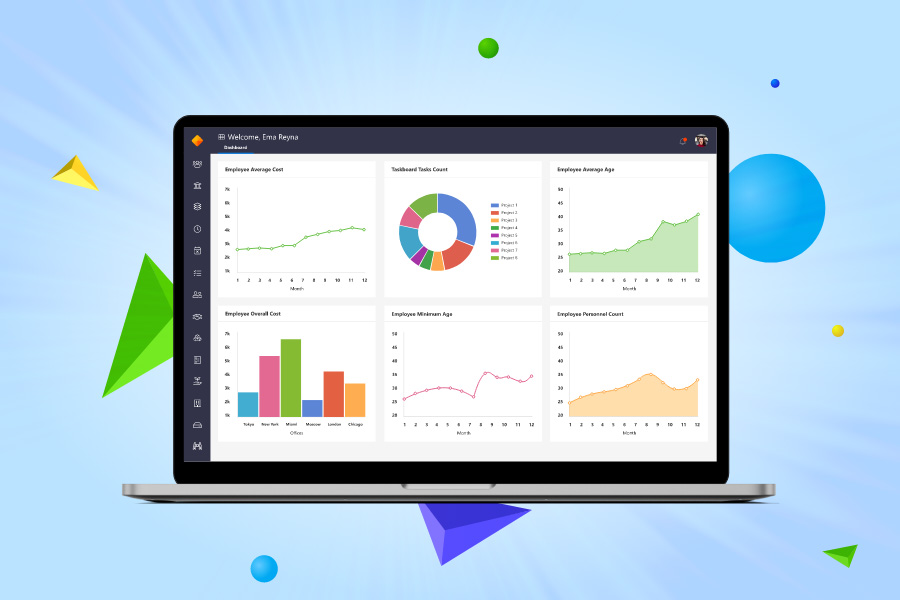
Have you ever realized that with a good hire you can save the company a significant amount of money? It's not just the money lost, it’s also about the opportunity cost. According to the U.S. Department of Labor, the average cost of a bad hire is up to 30% of the employee’s first-year earnings. Let’s say you hire a junior software developer with a yearly salary of $70,000, the expense for you as an employer would be around $21,000. But that’s not all, you can’t forget about other costs like recruitment expenses, lost clients, damaged employer reputation, low productivity and more which goes with a bad hire. 34% of CFOs said that managers have to spend 17% of their time supervising bad performing employees, which is equivalent to almost one day a week.
Even without studies we can tell that employees are a company’s most valuable asset. That’s why HR departments have a crucial role and should invest much more energy into hiring the best employees or finding company “superstars”. Yet according to CareerBuilder, 74% of employers admitted to hiring toxic employees.
Most companies neglect defining and tracking KPIs despite the fact that it can lead to effective hiring and retainment. Don’t worry, here at Vault we’ve already done this for you.
Read on: Employee onboarding- How to bring order to your HR processes
Critical KPIs for effective hiring and retainment
If you’ve read our blog on tracking KPIs for project management, you’ll know how much Vault helps when it comes to tracking and instantly understanding the vital and crucial metrics. Complex and comprehensive data is broken down into easy-to-digest graphs and charts.
For HR and the hiring process it’s the same. It was important for us to understand right away what the value of our new hire was and how our teams were performing. Data should empower you, not perplex you – which is why we’ve made it as clear as possible.
Here is a list of all the HR KPIs which every manager can track with Vault:
Hiring KPIs
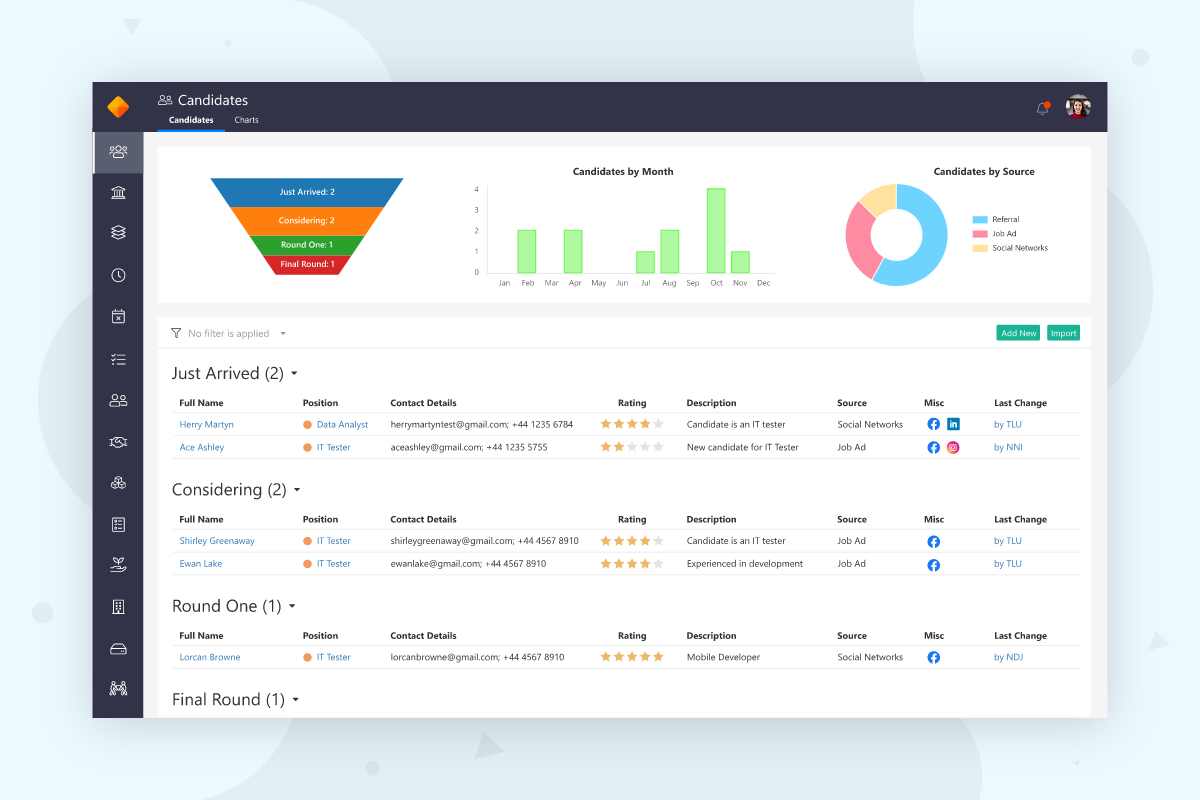
Recruiting Conversion rate – is calculated by taking the number of conversions and dividing it by the total number of ad interactions that can be tracked to a conversion during the same time period. For example, if you had 20 conversions from 1,000 interactions your conversion rate would be 2%. Since (20 ÷ 1,000) * 100 = 2%.
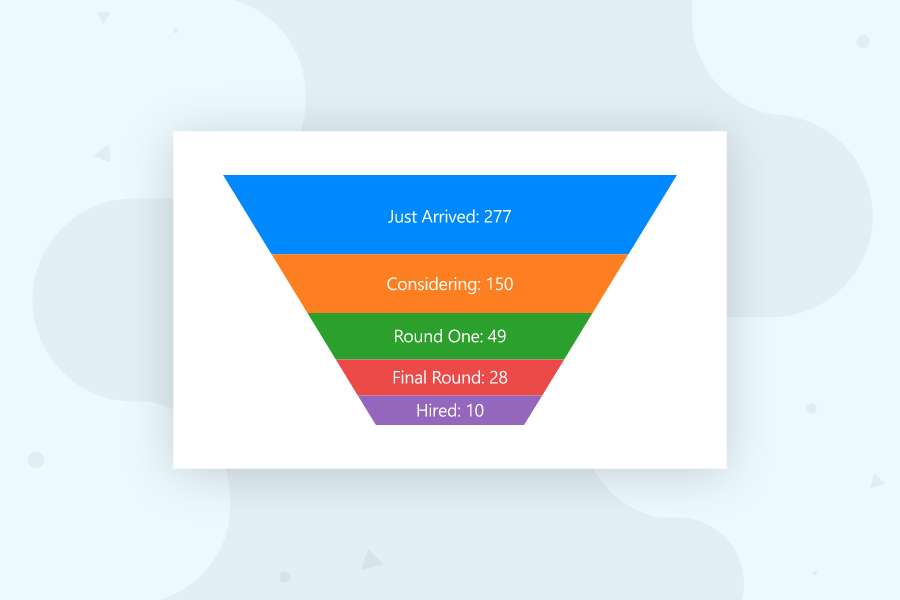
Cost per hire – is the sum of all the recruitment costs divided by the number of hires in a specific time period. It refers to the total cost of bringing a new employee to the company and includes the expense of the recruitment process, equipment, travel costs, administrative costs, and benefits.
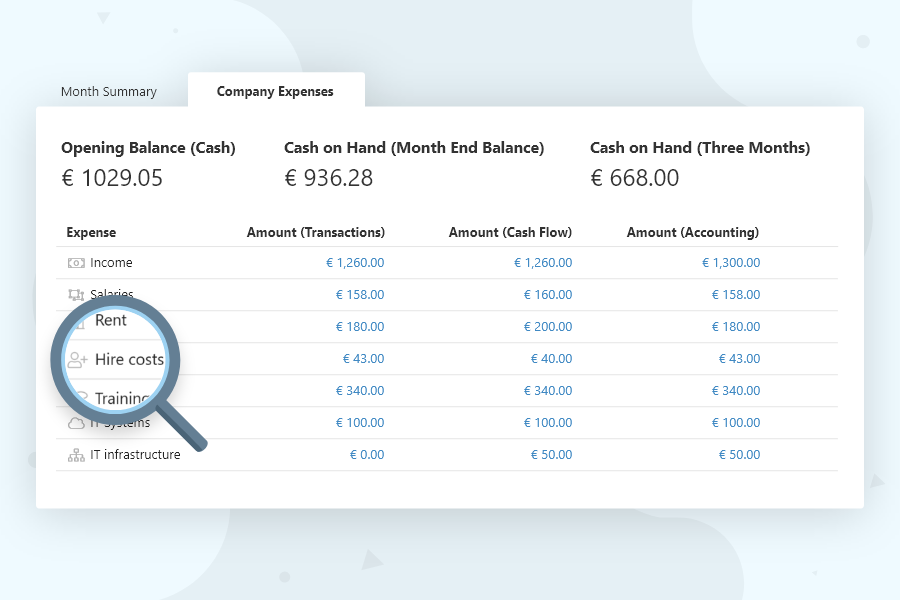
Quality of hire – is the percentage of new hires that are given a good rating by their manager during their performance review. Quality of hire indicates how effective HR is in recruiting and selecting candidates. Consistently maintaining a high quality of hire rating enables the organization to reach its strategic goals.
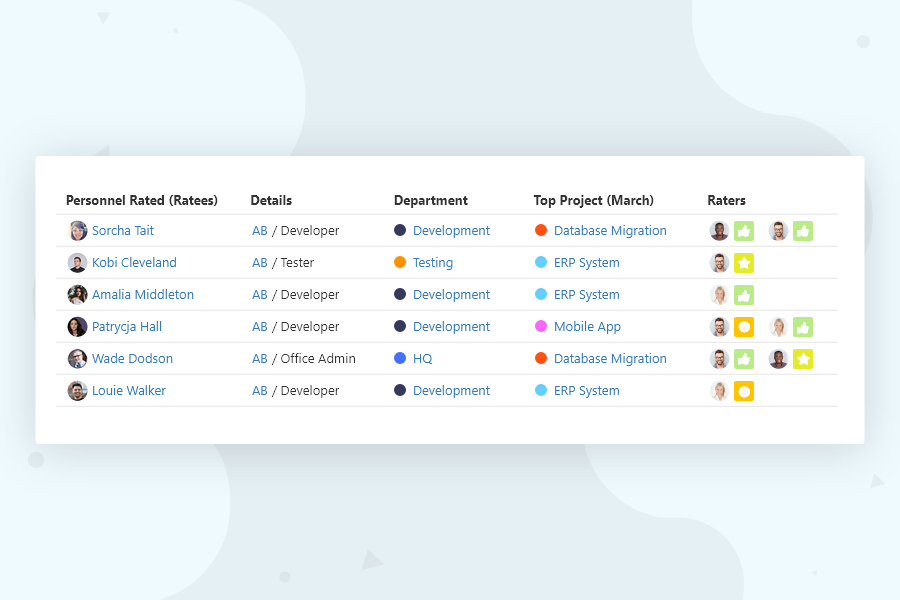
Training KPIs
Training costs – is calculated by dividing the training budget by the number of employees that have to be trained.

Training effectiveness – training has to be effective in order to reach its goal(s). A 90-day quit rate is the number of hires that leave within 3 months. It’s HR’s job to recruit the right people and failure to do so will have a negative measurable impact on organizational effectiveness.
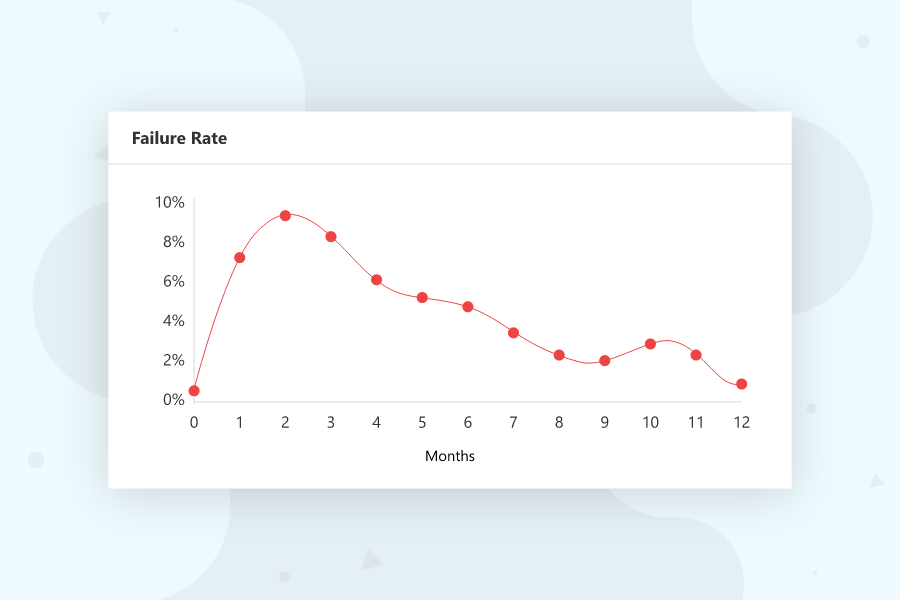
Internal HR KPIs
Absenteeism Rate – is calculated by dividing the number of working days in which the employee was absent by their total number of working days.
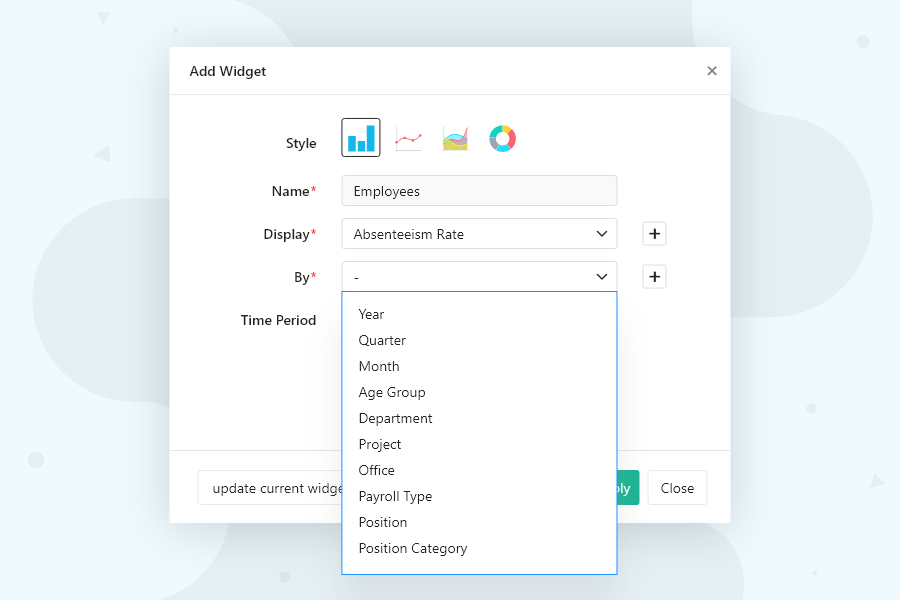
Benefits satisfaction – measures how satisfied employees are with employment benefits. It’s usually measured through an employee engagement poll and can help reduce the employee turnover rate.
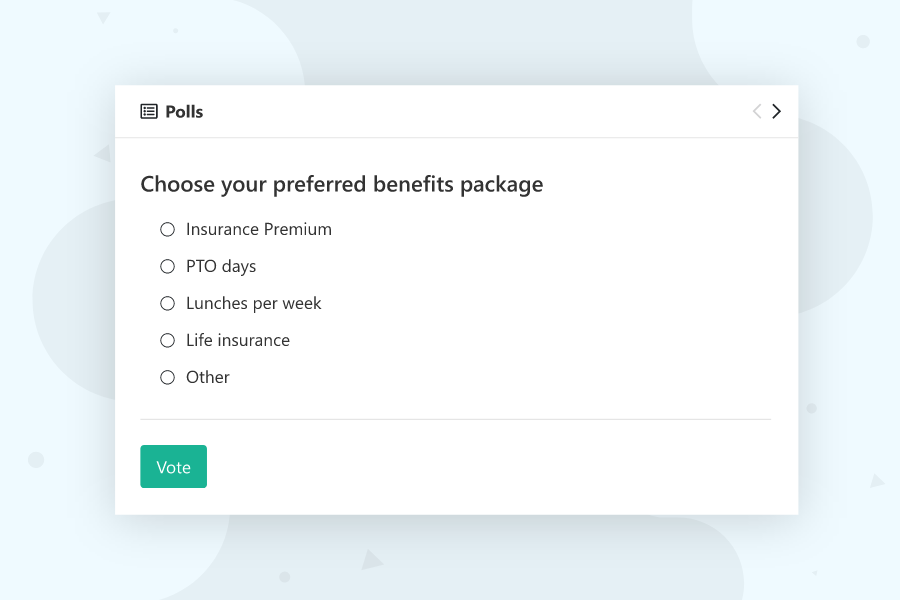
Overtime Hours – measures an employee’s workload in detail. This number should be lower as the higher the overtime hours the more it’ll cost the company. If employees are registering a lot of overtime hours, there could be concern regarding their productivity during their established working hours.
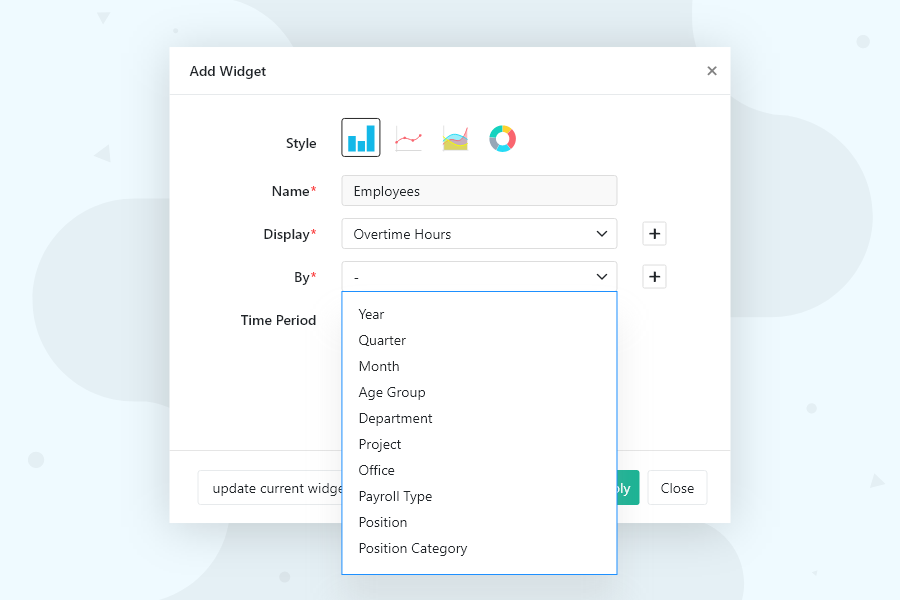
Employee productivity – this metric will show how efficient employees are at a task or project and can be used to evaluate their performance.
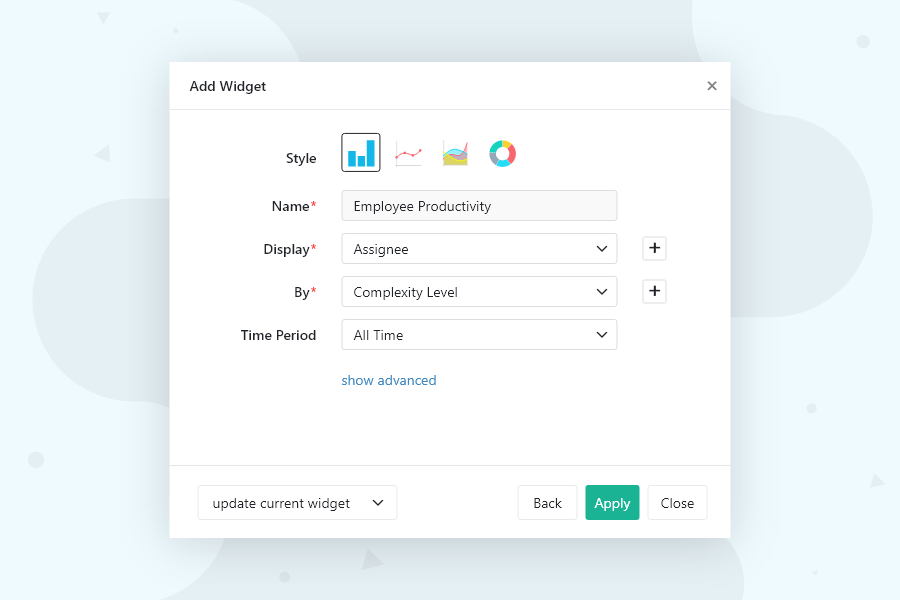
Employee satisfaction – is measured through employee surveys, regular HR reviews and monthly evaluations of office presence and job performance. Received tokens from colleagues and time balance are also valuable points to see. Indirect measures are absentee rates and employee productivity. Dissatisfaction can increase employee turnover.
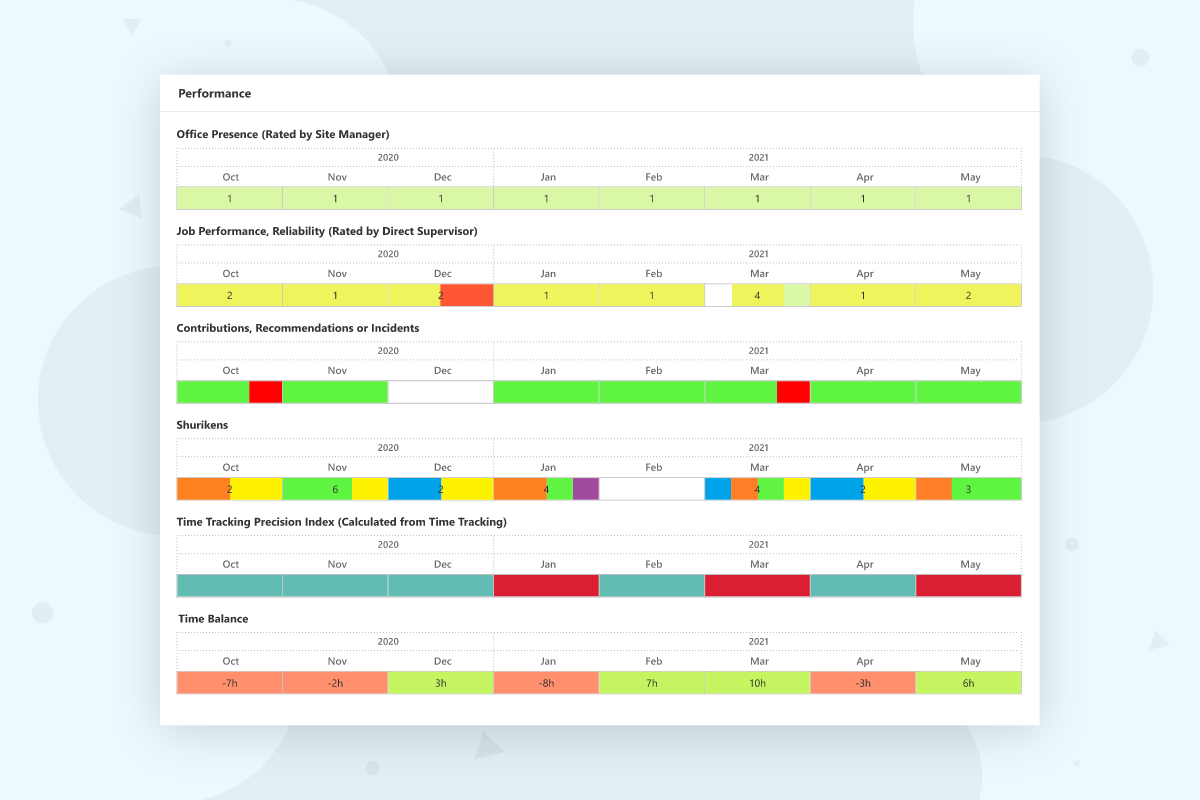
Employee innovation/idea index – is measured through attitude, ideas, or engagement surveys. Giving your employees a say and allowing them to vote on ideas for improvement and further innovations can be a key driver of business success. High employee engagement predicts higher productivity, better customer service and lower turnover.

Turnover rate – is a metric that is calculated based on the total number of employees that left during a given time period divided by the average number of employees.
.png)
Talent ratings – assess your employees’ performance and future potential. Completing talent reviews helps companies uncover talent gaps and identify high potential employees.
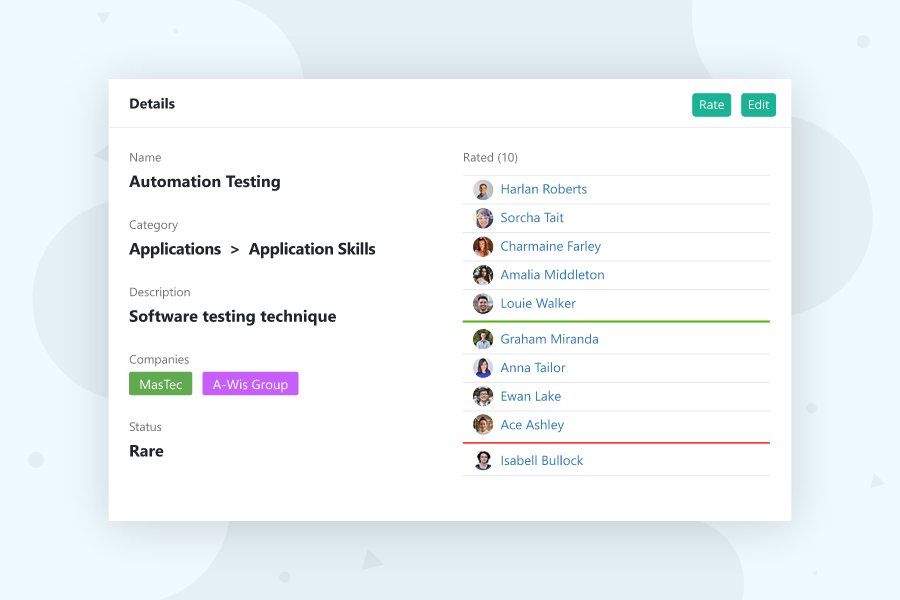
Female to Male ratio – helps understand the gender diversity within your organization.
.png)
The workforce ratio by age group, office, company, position – helps determine and understand the diversity in your company.

Average time stay – allows you to view how long employees stay with your company.
.png)
Total cost of your workforce (TCOW) – is the total amount of money an organization spends on its workforce and includes all direct compensation, benefits, employer insurance, taxes and workforce overheads like IT tools, general administrative expenses etc. The main purpose of this metric is to provide management with full visibility into labor costs.
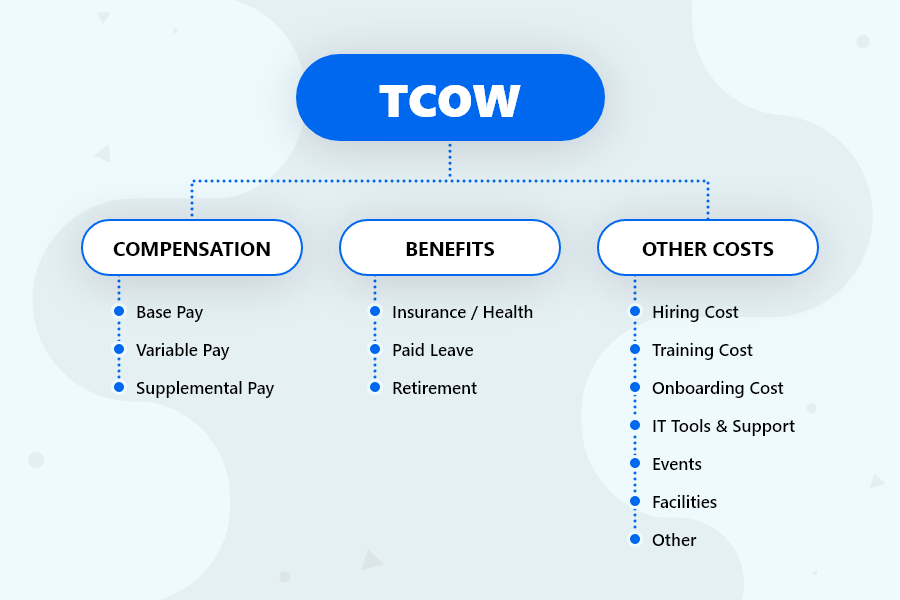
Cost of labor percentage – states the overall payroll expenditure for a business as a proportion of gross sales. Divide the cost of the workforce by gross sales and multiply the result by 100. Labor cost should be around 20%-35% of gross sales. This is a key metric to identify problems and opportunities to become more competitive, to capture payroll cost savings or to help improve automatization within the organization. Cutting labor costs is a balancing act which might sacrifice workforce morale or productivity. Finding ways to streamline labor costs is rooted in reducing costs without sacrificing workforce morale or productivity.
Salary Competitiveness Ratio (SCR) – used to evaluate the competitiveness of compensation options. Can be calculated by dividing the average company salary by the average salary offered from competitors or by the rest of your industry.
Read on: Have you properly defined your KPIs to your best advantage?

Gain an advantage by tracking the right metrics.
Now that you know what to look at and track in order to boost your HR activities, you can start manually tracking everything through spreadsheets and documents. Alternatively, you can do it the smart way and automatize a large part of the HR process.
Vault lets you do exactly that so that you can save time on tasks and collect important data automatically. Your role is to decide how you’ll use this data to grow your company.
If you’re interested in boosting your HR, feel free to contact us and we can tell you more about Vault’s capabilities.
.png)